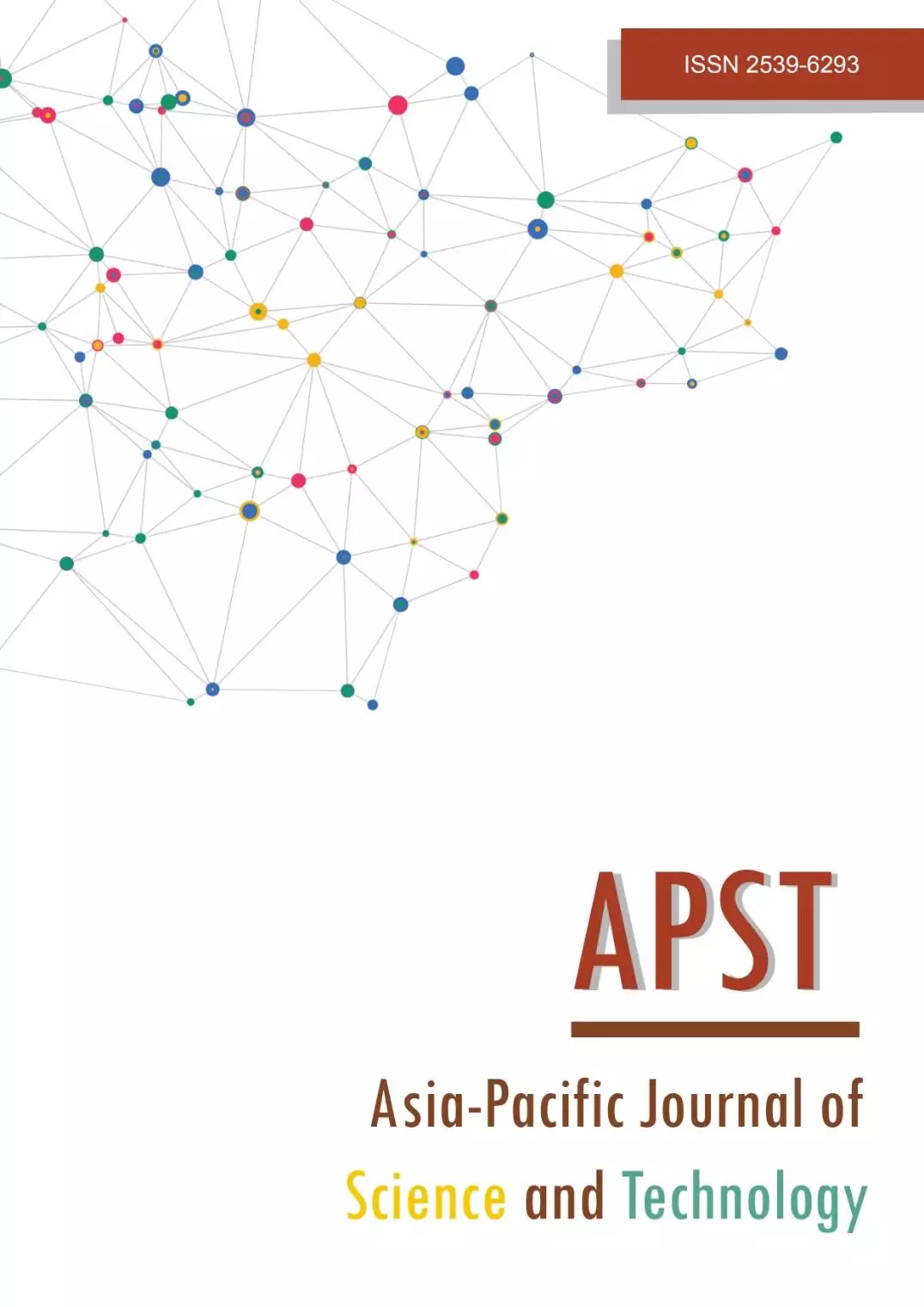Multi-Temporal InSAR analysis for monitoring the ground deformation of Mount Sinabung
Main Article Content
Abstract
Deformation of a volcano’s surface is a geohazard caused by volcanic activities and seismicity. Monitoring the deformations serves as a part of an early warning system that can mitigate disasters. Between 2017-2022, Mount Sinabung volcano’s ground deformation was monitored and analyzed using Multi-Temporal Interferometry Synthetic Aperture Radar (InSAR) and spatial statistics. The results showed substantial changes in surface elevation. The maximum monthly inflation was 4.7 cm in 2020, while the maximum monthly deflation was -4.7 cm in 2018. The correlation between the number of monthly eruptions and deformation patterns was very weak at 0.09 to -0.09, which indicated that the volcano’s eruptions did not lead to ground deformation around Mount Sinabung and vice versa. Moreover, the ground deformation at Mount Sinabung did not indicate a consistent or periodic pattern. Some areas experienced higher deformation rates than others, depending on the land cover and underground magmatic activities. The volcano surface has been inflating over the past six years with an average rate of 0.14 cm/year. Data from sample observation points recorded the highest rate of 1.74 cm/year at the mid-slope, and the lowest rate of 0.62 cm/year at the foot of the mountain. The mountain caldera showed a ground surface inflation rate of 1.53 cm/year. The data showed that, despite the absence of an explosive or magmatic eruption since Mount Sinabung returned to activity, its caldera and surface continue to undergo deformations at higher velocities. Future explosive eruptions are expected, and preemptive preparations for potential disasters should be planned.
Article Details

This work is licensed under a Creative Commons Attribution-NonCommercial-NoDerivatives 4.0 International License.
References
Pallister J, Wessels R, Griswold J, McCausland W, Kartadinata N, Gunawan H, Budianto A, Primulyana S. Monitoring, forecasting collapse events, and mapping pyroclastic deposits at Sinabung volcano with satellite imagery. J Volcanol Geotherm Res. 2019;382(3):149-163.
Kriswati E, Meilano I, Iguschi M, Abidin HZ, Surono. An evaluation of the possibility of tectonic triggering of the Sinabung eruption. J Volcanol Geotherm Res. 2019;382(4):224-232.
Seropian G, Kennedy MB, Walter RT, Ichihara M, Jolly AD. A review framework of how earthquakes trigger volcanic eruptions. Nat Commun. 2021;12(1):1-13.
Nurwihastuti WD, Astuti DJ, Yuniastuti E, Perangin-angin R, Simanungkalit MN. Volcanic hazard analysis of Sinabung volcano eruption in Karo, North Sumatra, Indonesia. IOP Conf Ser: J Phys: Conf Ser. 2019;1175(1):012186.
Mulyaningsih, Sri. Vulkanologi. Jl Progo B-15. Yogyakarta: Publisher Ombak Press; 2015.
Corsa B, Barbara-Selvilla M, Tiampo K, Meertens C. Integration of DInSAR Time Series and GNSS Data for Continuous Volcanic Deformation Monitoring and Eruption Early Warning Applications. Remote Sens. 2022;14(3):2-24.
Hanif M, Apichontrakul S. Vertical ground deformation monitoring of the sinabung volcano in 2021-2022 using sentinel-1 and DInSAR. Proceedings 12th International Conference on Environmental Engineering, Science, and Management. Jomtien Palm Beach Hotel & Resort, Pattaya, Thailand. May 17-18, 2023. p. 304-311.
Saepuloh A, Wikantika K, Urai M. Observing lava dome roughness on synthetic aperture radar (SAR) data: Case study at Mt. Sinabung and Merapi - Indonesia. In: 2015 IEEE 5th Asia-Pacific Conference on Synthetic Aperture Radar (APSAR). IEEE; 2015.
Lee WC, Lu Z, Kim WJ. Monitoring mount Sinabung in Indonesia using Multi-Temporal InSAR. Korean J Remote Sens. 2017;33(1):37-46.
Aditya A, Aoki Y, Anugrah DR. Surface deformation monitoring of Sinabung volcano using multi-temporal InSAR method and GIS analysis for affected area assessment. IOP Conf Ser Mater Sci Eng. 2018;344(3):1-10.
Razi P, Sri Sumantyo JT, Perissin D, Putra A, Hamdi, Widodo J, et al. Ground deformation measurement of Sinabung vulcano eruption using DInSAR technique. J Phys Conf Ser. 2019;1185:012008.
Kim JR, Cheng-Wei L, Shih-Yuan L. The use of InSAR phase coherence analyses for the monitoring of aeolian erosion. Remote Sens. 2021;13(12):1-24
Ullo LS, Pia A, Sica S, Martier D, Fiscante N, Cicala L. Application of DInSAR technique to high coherence Sentinel-1 images for dam monitoring and result validation through in situ measurements. IEEE J Sel Top Appl Earth Obs Remote Sens. 2019;12(3):875-890.
Molan Es, Yusuf, Zhong L. Can InSAR coherence and closure phase be used to estimate soil moisture changes. Remote Sens. 2020;12(9):1-13.
Cressie N, Moores MT. Spatial statistics. In: Sagar BS, Cheng Q, McKinley J, Agterberg F, editors. Encyclopedia of Earth Sciences Series. Cham: Springer International Publishing; 2023. p. 1–11.
Scott LM, Janikas MV. Spatial statistics in ArcGIS. In: Fischer M, Getis A, editors. Handbook of Applied Spatial Analysis. Berlin, Heidelberg: Springer; 2010. p. 27-41.
Romero-Puig N, Lopez-Sanchez M. A review of crop height retrieval using InSAR strategies: Techniques and challenges. IEEE J Sel Top Appl Earth Obs Remote Sens. 2021;14:7911-7930.
Sica F, Scarpa G. A CNN-Based coherence-driven approach for InSAR phase unwrapping. IEEE Geosci Remote Sens Lett. 2022;19:1-5.
Kobayashi T, Morishita Y, Munekane H. First detection of precursory ground inflation of a small phreatic eruption by InSAR. Earth Planet Sci Lett. 2018;491:244-254.
Heap M, Tobias BH, Albert G, Stephan K, Amy R. Hydrothermal alteration can result in pore pressurization and volcano instability. Geology. 2021;49(11):1348-1352.
Hendra Gn, Surono, Agus B, Kristianto, Oktory P, Wendy Mc, John P, Masato I. Overview of the eruptions of Sinabung Volcano, 2010 and 2013–present, and details of the 2013 phreatomagmatic phase. J Volcanol Geotherm Res. 2019;382:103-119.
Parker AL, Biggs J, Walters JR, Ebmeier KS, Wright JT, Teanby AN, Lu Z. Systematic assessment of atmospheric uncertainties for InSAR data at volcanic arcs using large-scale atmospheric models: Application to the Cascade volcanoes, United States. J Remote Sens Environ. 2015;170:102-114.


